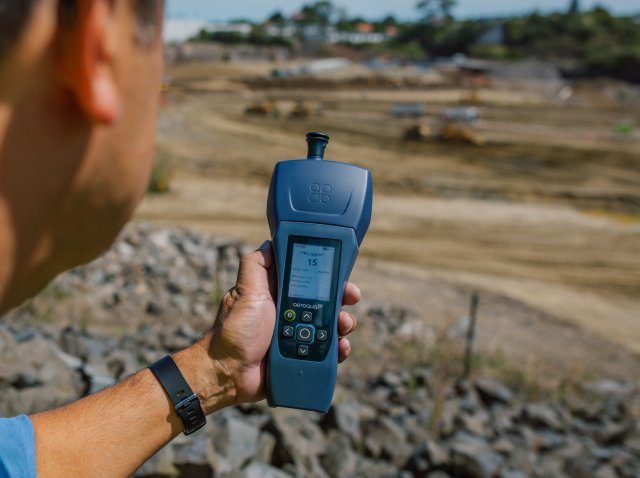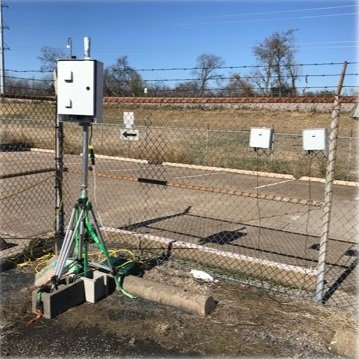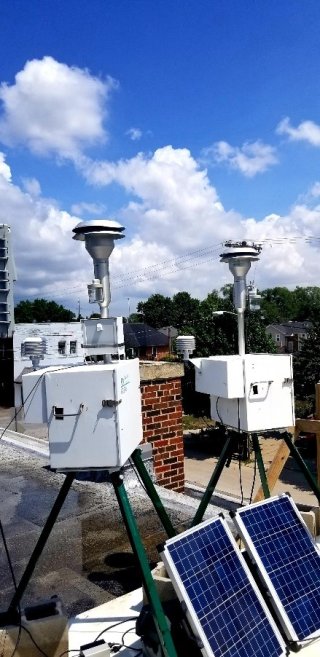EPA Extends Cooperative Research and Development Agreement with New Zealand Company to Advance Air Sensor Technologies
Published April 11, 2023

In November 2017, EPA signed a Cooperative Research and Development Agreement (CRADA) with Aeroqual, a New Zealand-based company specializing in the development of air quality monitoring equipment. The purpose of this CRADA was to investigate new applications, methodologies, and technologies for the lower-cost measurement of outside air pollutants. This five-year agreement, which was scheduled to end in 2022, has been extended an additional three years to facilitate continued cooperation, centered on developing and understanding lower-cost monitoring tools for measuring air pollutants.
Air sensors are increasingly being used by researchers, state and local agencies, participatory scientists (citizen scientists, community scientists, etc.), and others to monitor and measure air quality. Unlike large, stationary regulatory air monitors, which can be only used by a limited group of specialists, air sensors are smaller, lower-cost, and more portable, allowing a variety of groups to collect measurements to understand air quality.
While the use of lower-cost air sensor technologies continues to rise, accurately characterizing air quality remains a challenge. Additionally, there is still a need to better understand the performance of sensors over time and explore potential applications of these emerging technologies.
Drs. Rachelle Duvall and Andrea Clements are EPA’s co-investigators, working alongside Drs. Geoff Henshaw, Lena Weissert, and Anna Farquhar, Aeroqual’s project leads.
“We will continue to combine our expertise in air measurements with Aeroqual’s expertise in sensor development to advance air quality characterization using air sensors and other novel approaches,” says Duvall. “Because these tools are so much more accessible compared to traditional air monitoring equipment and are being used by not only the scientific community but also the general public, it is important for all users to have confidence in the data they are collecting."

Lower-cost air sensors typically measure common air pollutants, such as particulate matter (PM), ozone (O3), nitrogen dioxide (NO2), and many others regulated under the Clean Air Act. There is also great interest in measuring other compounds including air toxics, such as volatile organic compounds (VOCs), which cause adverse health effects.
As part of the original five-year CRADA, EPA and Aeroqual researchers focused on four areas to support the advancement of air sensor technologies:
- Sensor performance: Air sensors must obtain accurate and reliable air quality measurements. Scientists aim to understand the long-term performance and stability of sensors, cross interferences with other pollutants, impacts from temperature and humidity, and performance in areas with poor air quality.
- Sensor calibration: Calibration provides a way to ensure that air sensors continuously provide precise measurements over time.
- Expanding and enhancing measurement capabilities: While most of the commercially available sensors measure common air pollutants like PM, O3, NO2, and others, scientists are interested in the ability to measure additional air pollutants such as VOCs and other air toxics.
- Sensor applications: Investigating different ways to use and apply air sensor technologies is vital to exploring how sensor designs can be optimized to improve measurements and increase usability.
With the renewal of this CRADA for an additional three years, work planned will expand upon the original areas of focus and include:
- Conducting air quality projects in ambient and near source environments using lower-cost air sensors.
- Applying calibration approaches to air sensor data.
- Continuing to expand measurement techniques to include a broader range of air pollutants (e.g., air toxics, VOCs).
- Combining next-generation measurements into atmospheric models used to locate fugitive emissions.

Over the last five years, EPA scientists collected and evaluated data from lower-cost sensors placed at EPA’s Ambient Monitoring Innovative Research Station (AIRS) in Research Triangle Park, North Carolina, and as part of several EPA-led field studies. At the same time, the instrument designs were also evaluated. Aeroqual provided various air sensor technologies so that both EPA and Aeroqual could review project results and places for improvement. Much of the existing work can be found on EPA's Air Sensor Toolbox and includes projects such as the Kansas City Transportation and Local-Scale Air Quality Study (KC-TRAQS), the Phoenix as a Testbed for Air Quality Sensors (PTAQS) project, and Long-Term Air Sensor Performance studies.
As a result of the extended CRADA, Duvall hopes the two organizations will address some of the challenges brought by lower-cost air sensors. “We look forward to continuing this collaboration to further understand and advance cost-effective tools and approaches to measure air pollutants.”
Disclaimer: Mention of trade names or commercial products does not constitute US EPA endorsement or recommendation for use.
Learn more:
